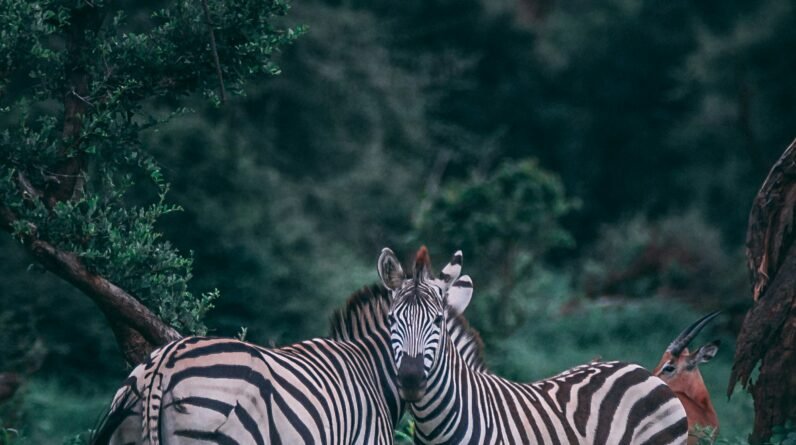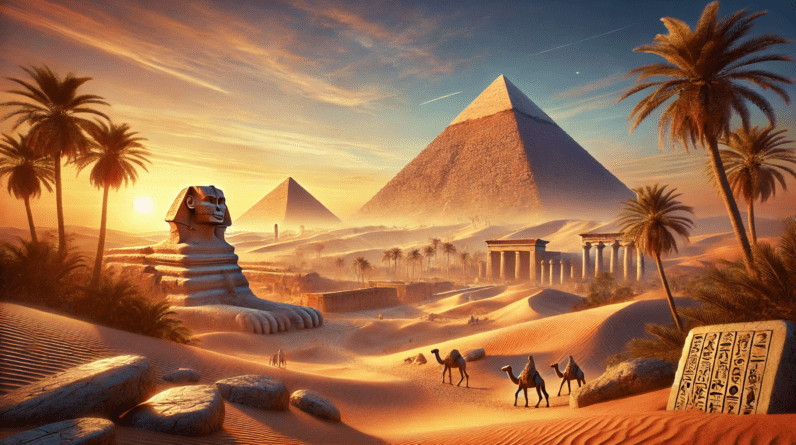
Types of Land in Africa – Geography, Climate, and Ecosystems
Africa is a land of unparalleled geographical diversity, home to an extraordinary array of landscapes that define its ecosystems, shape its climate, and sustain its people. The types of land in Africa range from vast deserts and sprawling savannas to dense rainforests and towering mountains. Covering over 30 million square kilometers, Africa is the second-largest continent on Earth, with environments that support unique biodiversity and provide critical resources to millions. These varied landscapes are shaped by geological forces, climatic patterns, and centuries of human interaction with nature, creating a rich tapestry of life that is central to the continent’s identity.

Iconic Types of Land in Africa
1. Deserts in Africa: Harsh Yet Vital Ecosystems
Africa is home to some of the largest and most iconic deserts in the world, including the Sahara, Kalahari, and Namib. These deserts may appear barren at first glance, but they are dynamic ecosystems that host a surprising variety of flora, fauna, and human life.
– The Sahara Desert: As the world’s largest hot desert, the Sahara spans 9.2 million square kilometers across 11 countries, including Algeria, Egypt, and Sudan. Its landscapes range from vast sand dunes to rocky plateaus and salt flats. Despite its extreme aridity, the Sahara sustains life through its oases, where plants like date palms and animals such as camels thrive. Human cultures, including nomadic communities like the Tuareg, have adapted to its harsh conditions over millennia.
– The Kalahari Desert: Located in Southern Africa, the Kalahari is a semi-arid sandy savanna, known for its red sand dunes, sparse vegetation, and intermittent water sources. It supports a wide array of wildlife, including meerkats, lions, and springboks, as well as the San people, who have a deep cultural and ecological connection to the land.
– The Namib Desert: One of the oldest deserts in the world, the Namib stretches along Namibia’s Atlantic coast. It is famous for its towering red sand dunes, unique fog ecosystems, and extraordinary species like the desert-adapted elephant and the ancient Welwitschia plant.
2. Savannas: Africa’s Iconic Grasslands
Savannas are one of the most recognizable types of land in Africa, known for their open grasslands dotted with trees and shrubs. These ecosystems are vital to both wildlife and human populations, supporting biodiversity and agriculture across vast regions.
– East African Savannas: The Serengeti and Maasai Mara are among the most famous savannas in the world, celebrated for the Great Migration of wildebeest, zebras, and gazelles. These grasslands are home to Africa’s “Big Five” animals—lion, leopard, elephant, rhinoceros, and Cape buffalo—and attract ecotourism that supports local economies. Conservation efforts are ongoing to protect these fragile ecosystems from threats such as habitat loss and poaching.
– West African Savannas: In contrast to East Africa, West African savannas often merge with agricultural lands and woodlands, providing essential resources for communities. Local populations rely on these savannas for farming, grazing livestock, and harvesting natural products like medicinal plants. The interplay of human and natural activity creates a unique cultural landscape that highlights the importance of sustainable land management.
3. Forests in Africa: Guardians of Biodiversity
Africa’s forests are among the most ecologically significant types of land in Africa, acting as carbon sinks, biodiversity hotspots, and cultural treasures.
– The Congo Rainforest: Spanning six countries, the Congo Rainforest is the second-largest tropical rainforest in the world. It is home to countless species, including forest elephants, gorillas, and hundreds of bird species. The rainforest also plays a critical role in regulating the global climate by absorbing carbon dioxide. However, it faces threats from deforestation, mining, and agricultural expansion.
– Mediterranean Forests: Found in North Africa and the Cape Floristic Region, these forests feature drought-resistant vegetation and a high number of endemic species. They are vital for protecting soil from erosion, regulating water cycles, and supporting surrounding agricultural activities.
– Montane Forests: Located in Africa’s high-altitude regions, such as the Ethiopian Highlands and Virunga Mountains, montane forests are rich in endemic species. They are critical habitats for wildlife such as the endangered mountain gorilla and also serve as water sources for millions of people living downstream.

The Interdependence of Africa’s Land Types
Each type of land in Africa is interconnected, forming a delicate ecological balance that supports both biodiversity and human livelihoods. For example, rivers originating in montane forests often flow through savannas and deserts, providing water to diverse ecosystems and communities. Similarly, savannas act as transitional zones between forests and deserts, blending the characteristics of both environments and serving as critical habitats for wildlife.
The types of land in Africa also shape cultural practices, economic activities, and traditions. For instance, deserts like the Kalahari are home to the San people, whose knowledge of the land has been passed down for generations, while savannas are central to pastoralist cultures like the Maasai. Forests, on the other hand, have long been sacred spaces for many African communities and are integral to spiritual and cultural rituals.
Challenges Facing Africa’s Landscapes
Despite their ecological and cultural significance, the diverse types of land in Africa face numerous threats, including climate change, deforestation, desertification, and urbanization. Rising temperatures are exacerbating water scarcity in deserts, while unsustainable agricultural practices are contributing to land degradation in savannas. Forests are being cleared at alarming rates for timber and farmland, jeopardizing the habitats of countless species.
To address these challenges, conservation initiatives are focusing on sustainable land management, community-based practices, and reforestation efforts. Projects like the Great Green Wall, which aims to combat desertification by planting trees across the Sahel, demonstrate how collaborative efforts can restore degraded landscapes and improve resilience to climate change.

FAQs About the Types of Land in Africa
1. What are the main types of land in Africa?
Africa’s main types of land include deserts, savannas, forests, wetlands, plateaus, mountains, and coastal plains.
2. Which is the largest desert in Africa?
The Sahara Desert is the largest desert in Africa, spanning 9.2 million square kilometers across North Africa.
3. What is a savanna, and where can it be found in Africa?
A savanna is a grassland ecosystem interspersed with trees and shrubs. Savannas are common in East Africa, especially in areas like the Serengeti and Maasai Mara.
4. What is unique about Africa’s forests?
Africa’s forests, such as the Congo Rainforest, are biodiversity hotspots that provide crucial habitats for species like gorillas, elephants, and countless bird species.
5. How does the Namib Desert differ from the Sahara?
The Namib Desert, located along Namibia’s coast, is much smaller but known for its towering red dunes and fog-based ecosystems, unlike the Sahara’s vast sand expanses.
6. What is the significance of Africa’s wetlands?
Wetlands like the Okavango Delta in Botswana are vital for water filtration, flood control, and supporting diverse wildlife, including hippos and crocodiles.
7. What role do Africa’s mountains play in its geography?
Mountains such as Kilimanjaro and the Ethiopian Highlands influence local climates, serve as water sources, and host unique ecosystems.
8. How do deserts in Africa sustain life?
Deserts in Africa sustain life through oases, sparse vegetation, and adapted wildlife like camels and fennec foxes, as well as resilient human communities.
9. Why are savannas important for biodiversity?
Savannas support large herbivores like zebras and elephants, predators like lions, and countless bird species, making them crucial for Africa’s ecosystems.
10. What are montane forests, and where are they located?
Montane forests are high-altitude forests found in regions like the Ethiopian Highlands and the Virunga Mountains, rich in endemic species.
11. What is the Great Rift Valley?
The Great Rift Valley is a massive geological feature in East Africa, marked by valleys, lakes, and volcanic activity, and it hosts diverse land types such as savannas and wetlands.
12. How do human communities rely on Africa’s land types?
Human communities depend on Africa’s land types for agriculture, grazing, water, medicinal plants, and cultural practices.
13. What are Africa’s coastal plains like?
Africa’s coastal plains, found along its Atlantic and Indian Ocean coastlines, feature fertile lands, fishing resources, and important biodiversity.
14. What threats do Africa’s land types face?
Desertification, deforestation, climate change, and urbanization threaten Africa’s diverse landscapes, impacting ecosystems and livelihoods.
15. Why is it important to protect Africa’s land types?
Protecting Africa’s land types ensures biodiversity, supports sustainable livelihoods, and combats climate change, preserving these resources for future generations.
Conclusion: Protecting Africa’s Land for Future Generations
The types of land in Africa are more than geographical features—they are the foundation of the continent’s biodiversity, culture, and economy. From the arid deserts of the Sahara and Namib to the fertile savannas and lush forests of the Congo Basin, these landscapes support countless species and sustain millions of people. Protecting and preserving these lands is essential not only for Africa but for the global community, as they play a critical role in maintaining ecological balance and combating climate change.
By prioritizing conservation, sustainable development, and climate resilience, we can ensure that Africa’s diverse land types continue to thrive, enriching our planet and providing for future generations.






